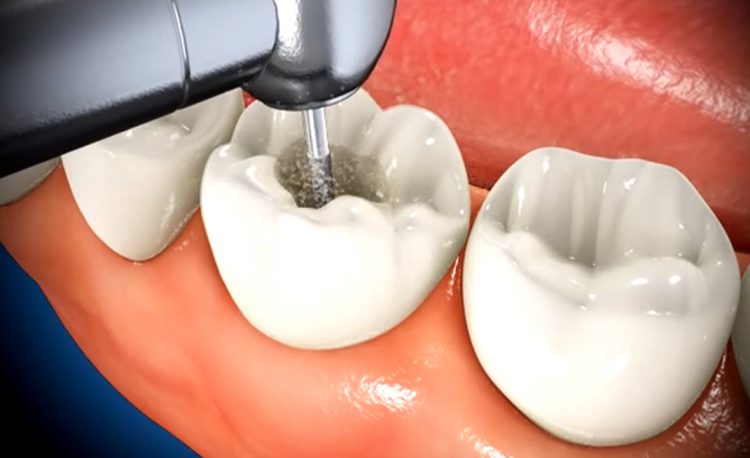When is root canal treatment needed?
The crown of the tooth is made up of the hard, white, enamel layer and a thicker dentine layer. Both these hard layers protect the innermost soft tissues of the tooth called the pulp. The dental pulp contains blood vessels and nerves within and extends from the crown to the tips of the root or roots.
Root canal treatment involves the removal of the pulp tissues from the tooth in the event that it gets infected or inflamed. The pulp can be infected or inflamed due to either
- Deep decay that involves the pulp
- Cracked or fractured tooth due to trauma
- Excessive wear of enamel and dentine exposing the pulp and
- Severe gum disease.
Signs of pulp damage may include pain, prolonged sensitivity to heat or cold, discoloration of the tooth, swelling, and tenderness of the overlying gums or a bad taste in the mouth. On the other hand, there may be no symptoms at all. If pulp inflammation or infection is left untreated, it can eventually cause pain, swelling and loss of the supporting bone
Procedure:
Removal of the infected or inflamed pulp is the first step in saving the tooth. Under local anesthesia an opening is made in the crown of the tooth to get access to the infected or inflamed pulp within.
Using small, specially designed hand or rotary files, the root canals are cleaned and shaped to a form that can be sealed. Debris within the canals is removed by flushing with an anti-bacterial solution.
After the space is cleaned and shaped, the dentist fills the root canals with a biocompatible material, usually a rubber-like material called “gutta-percha.” The gutta-percha is placed with an adhesive cement to ensure complete sealing of the root canals. In most cases, a temporary filling is placed to close the opening.
The temporary filling will be removed by your dentist before the tooth is restored. The tooth should be restored to full shape and function by either a permanent filling or a crown, depending on how much of the tooth is left. This should be done as soon as possible as there could be a risk of tooth fracture due to biting forces.
After the final visit a crown or other restoration are placed on the tooth to protect and restore it to full function.
If the tooth lacks sufficient structure to hold the restoration in place, the dentist may place a post inside the tooth.
Root canal treatment may be done in single or multiple visits depending on the complexity of the tooth. In between treatment appointments, medicaments may be placed within the canals and the tooth is covered with a temporary filling.
Often, X-rays are taken to determine the length of the root and to monitor the various treatment stages.
Advantages of Root Canal Treatment:
Root canal treatment saves teeth that would otherwise have been extracted. After root canal treatment the tooth is pulp-less i.e. it has no vital tissues within. A root canal treated tooth can function normally and can be maintained with routine dental care and oral hygiene measures.
Care of the Root Treated Tooth:
As far as possible, avoid chewing or biting on the tooth being treated until you have it permanently restored with either a filling or a crown. Excessive pressure at this stage may crack or fracture the tooth. Therefore, it is very important to restore the tooth properly as soon as possible. Most endodontically treated teeth last as long as natural teeth following permanent restoration.
Practice good oral hygiene, including brushing and flossing at all times, as root-filled teeth are as prone to decay as natural teeth. It is also important to have your treated tooth reviewed regularly by your dentist.
Earlier, Root Canal Treatment (RCT/ Endodontic treatment) used to be very cumbersome, and patients used to dread getting it done, added to it the number of visits! Things have changed a lot these days.
A patient requiring a RCT generally will experience pain in a tooth while biting or lying down or at times may notice pus draining from a boil on the gum next to the teeth. Many a times RCT is required for teeth fractured due trauma or biting something hard. Intentional RCT is often done on teeth involved in prosthetic rehabilitation or severe attrition. The clinic has also successfully treated avulsed (out of socket due to trauma) teeth with endodontic therapy and replantation/ splinting.
The highly experienced and skilled team of doctors generally do single visit root canal treatment* in this clinic. This saves multiple visits of patients.. Right from Apex locaters, Pro-Taper files, Rotary Hand pieces, RVG’s,to Obtura ( 3D obturation) the clinic is equipped with the latest equipment necessary for carrying out efficient Root Canal Treatment. Being a very technique sensitive procedure, the use of the best of materials and providing utmost care and detailed attention has ensured a very high success rate in Endodontic therapy in this clinic. Complex procedures like Apicoectomy are also carried out here. The clinic has successfully done Revision endodontics (Re-treatment) of many cases of failed root canal treatment which were done elsewhere. Post and Core treatment of teeth broken at the neck is frequently done here. Patients are generally advised to go for crowns over the root canal treated teeth, to prevent fracture of the tooth structure. Treatment of Endo-Perio lesions, Apexification/ Apexogenesis with Calcium Hydroxide is also successfully done here.
The clinic is famous for carrying out multiple single visit root canals in a day for patients having limited time as in cases of dental tourism or as a part of implant procedures.

